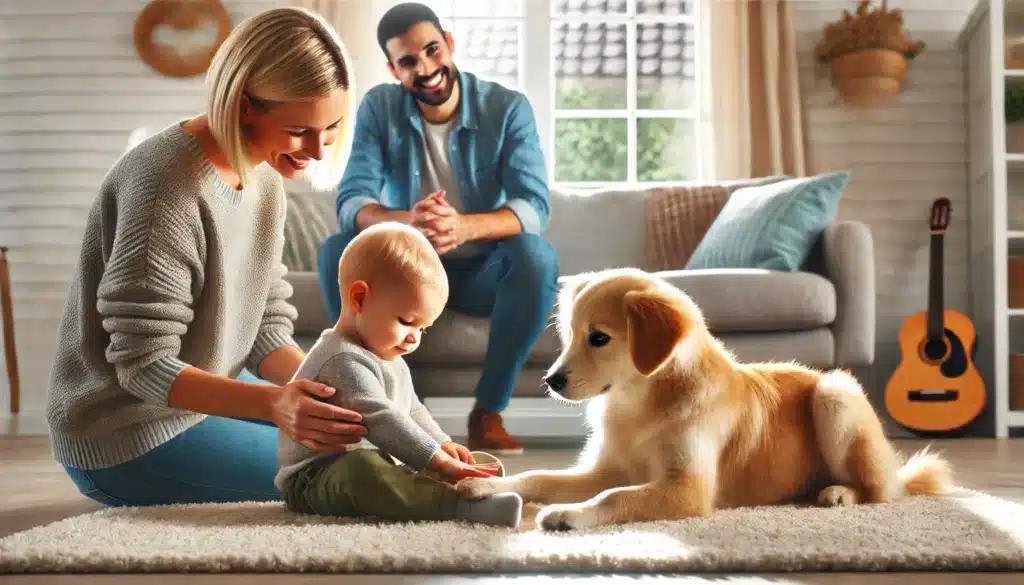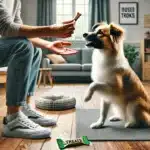Dogs and children can be the best of friends — growing, playing, and learning side by side. But to keep that bond safe and positive, both the dog and the child need guidance, boundaries, and respect.
Even the friendliest dog can become stressed or overwhelmed by a child’s unpredictable behavior, and many bite incidents happen simply because warning signs were missed.
In this article, you’ll learn how to foster safe, respectful, and joyful relationships between kids and dogs, whether you’re introducing a new puppy to the family or helping your child understand how to treat pets.
Why Dog-Child Safety Matters
According to studies, the majority of dog bites happen at home, with a familiar dog, and most involve children under 10. These incidents are usually preventable.
Understanding how dogs communicate, setting rules, and creating positive interactions can prevent fear, bites, and long-term behavioral problems — for both dogs and kids.
Understanding the Dog’s Perspective
To a dog, children can seem:
- Loud and unpredictable
- Uncoordinated or rough
- Threatening (especially if they move quickly or grab without warning)
Dogs don’t see kids the way we do. That’s why it’s important to teach children how to respect a dog’s space, and also to help dogs feel safe and in control of interactions.
Key Rules for Safe Dog-Child Relationships
🧠 1. Supervision Is Non-Negotiable
Always supervise interactions between dogs and young children — no exceptions.
Never assume your dog “would never bite.” Dogs use body language to warn, and children often miss those cues.
If you can’t directly supervise, use gates, crates, or separate rooms to give both the dog and the child their own space.
🛑 2. Teach Children What NOT to Do
Children should be taught to avoid:
- Hugging or climbing on the dog
- Pulling ears, tail, or fur
- Waking the dog suddenly
- Taking food, toys, or bones from the dog
- Screaming, chasing, or roughhousing around the dog
- Staring into the dog’s face or blowing air at them
- Touching the dog when they’re sleeping, hiding, or in their crate
Use gentle, consistent language to explain:
“Let’s give the dog some space”
“We don’t touch the dog while they’re eating”
“Watch how we use soft hands with pets”
🐾 3. Create Safe Zones for the Dog
Dogs need a place to retreat where they won’t be bothered. This could be:
- A crate
- A quiet room
- A dog bed in a low-traffic area
Teach your child that when the dog goes there, they’re off-limits. No touching, following, or interrupting.
🧸 4. Teach Gentle Touching and Respect
Show your child how to:
- Offer an open hand for the dog to sniff
- Pet gently on the back or shoulders (not face or tail)
- Speak softly and move slowly
- Recognize signs the dog wants space
Turn it into a game — “Can you show me how soft your hands are?” or “Let’s practice dog-safe petting!”
🐶 5. Train Your Dog for Child-Friendly Behavior
Teach your dog to:
- Respond to cues like Sit, Leave it, and Go to your bed
- Be comfortable with gentle handling
- Tolerate sudden sounds or movement (through desensitization)
- Stay calm around toys, snacks, and child energy
Training builds trust and predictability, which is essential when children are in the mix.
Reading Dog Body Language: What to Watch For
Children often miss a dog’s early warning signs. Teach yourself — and your kids — to recognize when a dog is uncomfortable:
| Dog Is Relaxed | Dog Is Uncomfortable |
|---|---|
| Loose, wagging tail | Tucked tail |
| Relaxed body | Stiff posture |
| Soft eyes | Whale eye (white showing) |
| Open mouth, relaxed | Closed mouth, licking lips |
| Play bow or leaning | Yawning, turning head away |
| Quiet or curious | Growling, freezing, hiding |
If you see signs of discomfort, interrupt the interaction immediately and calmly give the dog space.
Age-Appropriate Tips for Children
👶 Toddlers (0–3 Years)
- Should never be left alone with a dog
- Must be physically kept separate unless held
- Cannot understand rules — use barriers for safety
🧒 Preschoolers (4–6 Years)
- Can begin to learn basic pet manners
- Should practice petting gently with supervision
- Should not be responsible for walking or feeding alone
👧 Older Kids (7+)
- Can learn about body language and training
- Can participate in feeding, basic commands, and cleanup
- Should still be supervised with high-energy or large dogs
Activities to Help Dogs and Kids Bond Safely
- Training together: Kids can give simple commands like “Sit” or “High five”
- Fetch or tug-of-war with rules: Use toys with boundaries
- Snuffle mats or treat puzzles: Great for calm interaction
- Storytime with the dog: Helps build trust
- Treat delivery with supervision: Hand-feeding can build positive associations
Keep play sessions short, calm, and structured.
When to Seek Help
If your dog:
- Growls, snaps, or avoids your child
- Shows signs of stress daily
- Freezes or guards food, toys, or space
- Has bitten before or shows unpredictable behavior
It’s time to work with a professional trainer or canine behaviorist.
Final Thoughts: Safe Bonds Are Taught, Not Assumed
Dogs and children can form powerful, lifelong friendships — but it doesn’t happen by chance. With clear rules, supervision, and gentle education, both your dog and your child can thrive together in a safe, respectful, and joyful relationship.
Teach empathy. Model kindness. Watch the bond grow.







